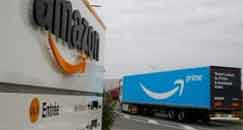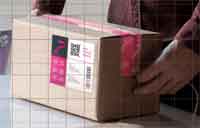| |
|
| |
|
 |
Supply
Chain by the Numbers |
| |
|
| |
- Feb. 11, 2021
|
| |
|
| |
|
| |
|
| |
Trucking Failures Soared in 2020; US Container Imports Smash Record in 2020 Despite Slow Economy; Amazon Building Trucking Firm Incubator; Start Up Taking on UPS, FedEx |
| |
|
| |
| |
| |
| |
3140 |
 |
That's how many US trucking firms failed in 2020, according to a new report from Broughton Capital. That represents a 185% jump from the level of failures in the trucking sector in 2019. Not surprisingly, about 50% of the 2020 failures came in Q2, when the economy contracted more than 30% and freight volumes plummeted. The report says smaller carriers were especially hard hit, and comprised a much higher percentage of total failures than they did in 2019. The downturn in freight volumes was exacerbated for many by sharp rises in insurance costs last year. Carriers in places such as Texas and Oklahoma were also hurt financially by big declines in oil and gas shipments. Independent truckers and small carriers make up the majority of US trucking firms, with 91% of fleets operating six or fewer trucks and 97% operating 20 or fewer, according to the American Trucking Associations. In good news, trucking failures in Q4 dropped to around just 40, versus over 1500 in Q2.
|
|
|
| |
| |
|
|
 |
That is how many trucking firms Amazon wants to have as part of its semi-secret Amazon Freight Partners program by the end of the year, up from a little over 100 currently. And to get there, Amazon has created an "incubator" to teach entrepreneurs how to build small trucking firms, similar to its Delivery Service Partner program for parcel shipments to consumer homes. The catch here as well: Amazon Freight Partners can only carry loads from across Amazon's own network. Apparently, this is all part of a strategy of reducing Amazon's dependence on larger trucking firms to move "middle mile" freight to its fulfillment centers and delivery stations, just as it is building its own parcel delivery network to reduce its need for UPS and the US Postal Service for last mile delivery. Amazon wants to build a pool of dedicated drivers or small firms to lock-in trucking capacity, and likely to reduce the big swings in rates for commercial truckload transportation. |
| |
| |
|
|
| |
| |
$4.9 Million |
 |
That's how much investment money a start-up last mile delivery company called Pandion said this week it has received in its quest to take on UPS and FedEx. The company was founded by Scott Ruffin, the founder and head of Amazon Air for almost five years and most recently head of Walmart's ecommerce transportation division. Ruffin said he believes Pandion can adjust to peak periods more successfully than the current parcel leaders, using - what else - using AI and machine learning to minimize shipping delays and optimize delivery networks. Traditional parcel providers are built for a pre-internet brick and mortar world, Ruffin claims. Bloomberg also reported that Pandion will begin opening a handful of package sorting centers later this year, using contract trucking companies to transport packages. Ruffin said the company should be able to handle up to 10 million packages a month by November. SCDigest says it is going to need a heck of a lot more than $4.9 million. |
| |
| |
| |
| |
| |
|
|
|
| |
 |
 |
| |
 |
![]() |
 |
|
| |
 |
Feedback |
|
|
|
![]()
|
No Feedback on this article yet.
|
|
![]() |
|
|
|
![]() |
 |
![]() |
 |
|
| |